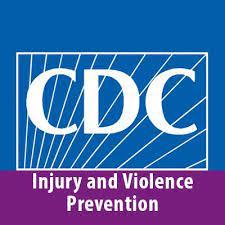On July 16, 2021, the Board of Scientific Counselors of the US National Center for Injury Control and Prevention (NCIPC/BSC) met publicly by podcast. The agenda was to review the status of CDC efforts to rewrite and expand its 2016 guidelines on prescription of opioid pain relievers to adults with chronic non-cancer pain. The review was offered by an advisory Opioid Workgroup (OWG) appointed by the Board of Scientific Counselors in January 2020."
The review was structured around 12 recommendations made by writers of the draft. The public has not yet seen the details behind these recommendations. But what we have seen is startling for its repetition of assertions from the fatally flawed 2016 publication.
The OWG report reveals a notable lack of consensus among members concerning many of its observations. However, it is possible to extract certain central themes:
- The rewrite lacks balance in its treatment of public health concerns versus individual patient quality of life. It fails to adequately address the benefits of prescription opioids in comparison to their perceived risks.
- The CDC writers missed many key references in the medical literature, preferring to focus instead on papers in which one of their number (Dr Roger Chou) was a principal contributor. It is notable that Dr Chou withdrew from participating in the BSC discussions, on grounds of financial conflict of interest. More fundamentally, however, over-concentration on previous work where he was a principal contributor might be viewed as a professional conflict of interest, placing Dr Chou in the position of advocating his own work as National healthcare policy.
- Several OWG participants expressed concerns that the draft guideline could be used to force tapers on legacy patients. Others found no research support for recommended 50/90 MMED dose thresholds or 3-7 day prescription limitations, and recommended removal of such numbers from the draft revision. Some voiced concern that wording of the draft may facilitate precisely the kind of “misinterpretations” and “misuse” of the guidelines that have characterized the past five years.
Readers may be aware that I am a long-time patient advocate and a sharp critic of the CDC guidelines. However, I am also a technically trained data analyst and healthcare writer, with 25 years’ experience in social media groups that serve tens of thousands of people in agony, their caregivers and their physicians.
I have collaborated during the past three years with Steven E Nadeau MD and Jeffrey K Wu, in a major analytic review of the clinical evidence on opioids and chronic pain. The paper summarizes and analyzes 128 references from medical literature. Although not written with this intention, our executive summary illuminates many of the fundamental problems with both the original CDC guidelines and the draft rewrite recommendations. It is not overstating to suggest that like its predecessor, the draft rewrite is simply wrong on fundamental science and prevailing medical practice.
--- --- ---
There is substantial, albeit not definitive, scientific evidence of the effectiveness of opioids in treating pain and of high variability in opioid dose requirements and side effects.
The estimated risk of death from opioid treatment involving doses above 100 MMED is ~0.25%/year.
Multiple large studies refute the concept that short-term use of opioids to treat acute pain predisposes to development of opioid use disorder.
The prevalence of opioid use disorder associated with prescription opioids is likely <3%.
Morbidity, mortality, and financial costs of inadequate treatment of the 18 million Americans with moderate to severe chronic pain are high.
Because of the absence of comparative effectiveness studies, there are no scientific grounds for considering alternative non-pharmacologic treatments as an adequate substitute for opioid therapy, but these treatments might serve to augment opioid therapy, thereby reducing dosage.
There are reasons to question the ostensible risks of co-prescription of opioids and benzodiazepines.
As the causes of the opioid crisis have come into focus, it has become clear that the crisis resides predominantly in the streets and that efforts to curtail it by constraining opioid treatment in the clinic are unlikely to succeed.”
--- --- ---
The central measure of value assumed by the CDC draft writers is still reduction in Morphine Milligram Equivalent Dose (MMED). But it is now known from multiple sources -- including a June 2021 FDA workshop -- that this measure is unsupported by the medical literature. MMED is enormously harmful as a one-size-fits-all criterion for public policy, which is precisely the manner in which the revision writers have used it.
No less an authority than the American Medical Association has phrased the issues in the following way, as recently as June 2020:
“We can no longer afford to view increasing drug-related mortality through a prescription opioid-myopic lens.”
“A CDC Guideline only focused on “opioid prescribing” will perpetuate the fallacy that by restricting access to opioid analgesics, the nation’s overdose and death epidemic will end.”
“It is clear that the [2016] CDC Guideline has harmed many patients — so much so that in 2019, the CDC authors and HHS issued long-overdue … clarifications that states should not use the CDC Guideline to implement an arbitrary threshold.”
Instead of looking with fresh eyes at opioid-related public health issues, the revision writers appear to have doubled down on the same errors made in 2016. This is not surprising. Among the five writers, none is qualified by clinical experience in management of acute or chronic pain in community practice. They appear to have fallen into the trap of defending their earlier work at the expense of addressing the many criticisms published by other practitioners during the past five years. Given the many substantial errors in their draft recommendations, I must suggest that the group should resign in favor of better qualified contributors who can bring fresh perspective to the project.
Author note: Richard A Lawhern PhD is a member of the Board of Scientific Advisors at the American Council on Science and Health. He has published over 130 papers and articles in a mixture of medically oriented journals and popular media.




